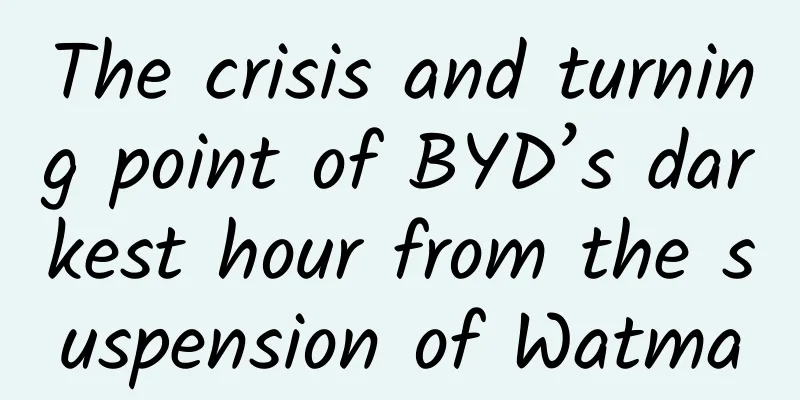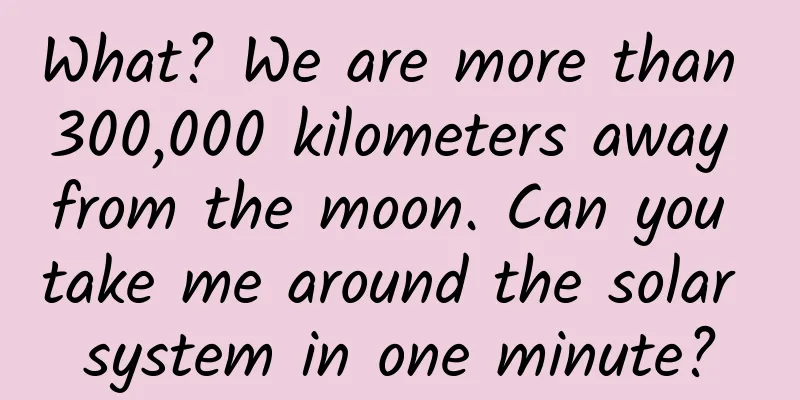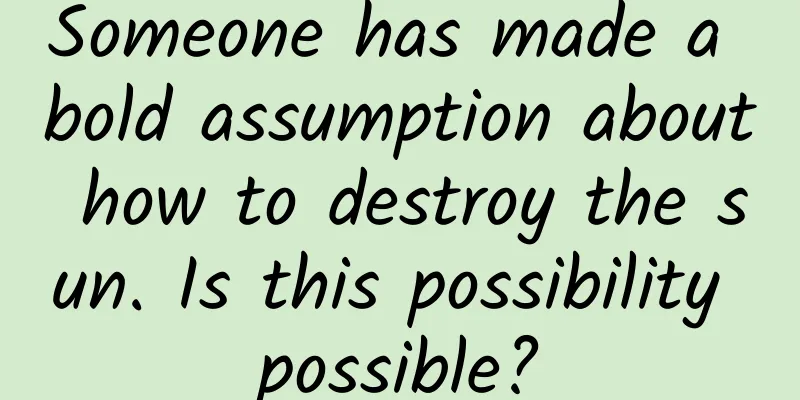The crisis and turning point of BYD’s darkest hour from the suspension of Watma

|
On June 28, Watma announced that it would give all employees a half-year holiday due to insufficient orders and financial difficulties. Watma's debt exceeded 20 billion in April this year. This power battery company, which has ranked third in the country in market share for several consecutive years, is on the verge of a complete collapse. The main reason for Watma's crisis is the mistake in choosing the technical path. Although Watma's main lithium iron phosphate battery has the advantages of safety, low price and fast charging, it has low energy density and the market will shrink in the future. With the country's inclination towards high-energy-density batteries such as ternary lithium, Watma can enjoy fewer and fewer subsidies. Now, another company that has been hit by the technical path is BYD. Like Watma's technical route, BYD also focuses on lithium iron phosphate batteries. Affected by this, BYD was overtaken by CATL in 2017 and lost the throne of the industry. CATL, which focuses on ternary lithium battery technology, not only ranked first in the country, but also surpassed Panasonic in one fell swoop to become the world's first. BYD has not had a good time recently. In March this year, BYD released its 2017 annual report, with revenue of 105.9 billion yuan, a year-on-year increase of 2.36%; net profit of 4.066 billion yuan, a year-on-year decrease of 19.51%. This is the first time that BYD's net profit has declined year-on-year since 2013. One of the few highlights of BYD's 2017 financial report is the net cash inflow from operating activities, which reached 6.37 billion, a year-on-year increase of 445%. This shows that BYD's product sales are generally good, and the resulting capital return is in good condition. In the first quarter of 2018, BYD's growth was weak and failed to effectively curb the trend of declining profit margins. The net profit in the first quarter was 102 million yuan, a year-on-year decrease of 83.09%. After deducting non-recurring gains and losses, BYD's net profit loss was 329 million yuan, a year-on-year drop of more than 173%. BYD expects its net profit in the first half of this year to be 300 to 500 million yuan, a year-on-year decline of 71% to 83%. The decline in the financial report is directly reflected in the stock market. BYD's stock price has dropped from more than 60 yuan before the New Year to more than 40, and its market value has shrunk by nearly one-third. CATL, which has surpassed BYD in terms of installed capacity, not only went public this year, but also rose against the backdrop of a generally sluggish stock market. Currently, CATL's market value has surpassed that of its big brother BYD. BYD's darkest moment BYD's wrong choice of technology tree is not an unprovoked disaster - the closed production system has allowed BYD to harvest a lush tree, but it has also lost a whole forest. The internal circulation system of self-production, self-sales and self-use has saved BYD a lot of costs in battery procurement, making its own cars more price competitive. But the side effect is that the closed production system makes BYD always complacent, and its ability to capture and sniff out external trends is no longer sharp, which underestimates the changes in industry demand and thus misses the trend of change in the power battery industry. In fact, part of the reason for the rise of companies such as CATL is that BYD sticks to the closed system and takes the initiative to vacate a broader market space. The orderly withdrawal of national subsidies is another unexpected blow to BYD. In 2016, the subsidy funds for new energy vehicle companies in my country were 12.33 billion yuan, while in 2017 it was 6.64 billion yuan, only 46% of 2016. BYD, a major manufacturer of new energy vehicles, suffered heavy losses. In 2018, policy subsidies further tilted toward high-energy-density batteries and new energy vehicles with long mileage. Subsidy standards were greatly improved, and many subsidies gradually shifted from the original 2B to 2C. Many funds originally paid to car companies were directly subsidized to consumers, and many OEMs that were eagerly waiting for state subsidies were cleared. BYD is highly dependent on subsidies. According to the financial report, BYD received a total of 5.638 billion yuan in government subsidies in the 9 years from 2009 to 2017, which was more than the total net profit from 2011 to 2015. In 2014, BYD's government subsidies even accounted for 91.36% of the total profit. Subsidies collapsed like an avalanche, and BYD's profits also shrank dramatically. Based on the past, compared with the present. BYD woke up and did not sit idly by. Although BYD was late for the ternary lithium train, it was not as stubborn as Watma to miss it. In 2017, BYD began to use ternary lithium batteries in its passenger car business. Recently, BYD has built a new 18GWh production base in Qinghai, which is expected to be officially put into production in mid-2019. After completion, BYD's planned power battery production capacity will increase from 16GWh to 34GWh, of which ternary lithium batteries account for 25GWh. BYD's embrace of ternary lithium batteries means that it has begun to completely deny the technical route that made it famous in the past. This is the great courage that only giants have. As of the end of 2017, CATL's total production capacity was 17.09GWh. When its Huxi lithium-ion power battery production base project reaches full production, CATL will add 24GWh of production capacity, and the total production capacity will reach 41.09 GWh in 2020. Judging from the data, BYD will occupy some production capacity advantages in the short term, but in the long run, CATL's total production capacity will be higher than BYD, with an excess of about 23%. In the future, in addition to continuing to use lithium iron phosphate batteries in the public transportation field, BYD's other new models will use ternary lithium batteries. In March 2018, BYD released three new models, Qin EV 450, e5 450, and Song EV 400, all of which were upgraded from lithium iron phosphate batteries to ternary lithium batteries. For a company with a scale of hundreds of billions, transformation is a complete transformation. The primary problem facing the reform is capital. With a huge amount of capital, BYD's own capital is not sufficient, and it needs to raise funds from the market, and the cost of financing is very high. In the first quarter of 2018, BYD's non-current liabilities due within one year reached 14.039 billion yuan, an increase of more than 4 billion yuan from 9.874 billion yuan in the previous period, an increase of 42%. BYD's financial expenses in the first quarter of 2018 were 813 million yuan, a huge increase of 114% from 380 million yuan in the previous period. In order to transform, BYD issued a large number of short-term bonds, which on the one hand alleviated the urgent need, but on the other hand inevitably increased a large amount of interest expenses. BYD's financial report is getting bleaker. In addition, the decline in fuel vehicle business is also an important reason for BYD's profit decline. In 2017, BYD's net profit after deducting non-recurring items decreased by 1.63 billion, while the gross profit of its automotive business decreased by 2.34 billion. Although BYD has always emphasized that it walks on two legs: fuel vehicles and new energy vehicles. However, in 2017, BYD's fuel vehicle sales fell by 24.6% year-on-year, while new energy vehicle sales increased by 15% year-on-year. The decline in fuel vehicle sales has made a significant "contribution" to BYD's decline in profit margin in 2017. Obviously, BYD does not have the ability to stand alone in the two legs of new energy and fuel vehicles. To win in the future, the turning point is just around the corner . Fortunately, everything has a turning point. This year, the state has raised the subsidy standard for new energy vehicles. For industry leaders like BYD, it is an opportunity. In the first quarter of 2018, BYD received government subsidies of about 640 million, reaching half of the 1.275 billion subsidies for the whole year of 2017. Since most of BYD's models have met the conditions for high subsidies, the subsidies have increased. The decline of subsidies and the increase of standards in this round will inevitably lead to further shrinkage of the market share of some relatively weak new energy vehicle companies and even delisting, and these vacated market shares will inevitably be divided up by superior companies. This means that in this round of subsidy policies, good money drives out bad money, and superior companies can obtain more resources. Although the current days are cold, once they get through, the development space for industry leaders like BYD will become larger. At present, BYD is working on the divestiture of its power battery business, which is expected to be completed by the end of 2018 or early 2019. According to the plan, BYD's power battery company will be listed independently between 2022 and 2023. That is to say, BYD's battery business will operate independently and supply to the outside world, gradually getting rid of the internal situation of self-production, self-sales and self-use, which will help BYD batteries to expand the market and make up for the development opportunities missed before. At present, BYD has already conducted business docking with major automobile OEMs such as Great Wall, BAIC, and GAC in the field of power batteries. In addition, another four new car-making forces have expressed their willingness to cooperate with BYD on battery business. Although BYD is working hard to narrow the gap with CATL, it is still far behind CATL in terms of the number of truck manufacturers and supporting models it supplies. CATL only makes batteries and can devote all its energy to the battery business. Compared with BYD's long industrial chain, CATL is more likely to make breakthroughs at a single point. Now CATL's market value has surpassed BYD, and it can put out more abundant funds for research and development; and CATL's shipment scale and number of partners are also far greater than BYD. When these advantages are superimposed, the advantages formed will be geometric, thus raising the competitive barriers and making BYD's pace of catching up even heavier and more difficult. However, BYD and CATL are not much different in battery technology. BYD lost more because of its late layout than its backward technology. Looking at domestic power battery companies, CATL and BYD's first and second positions are very stable. BYD has the strength to maintain this position, and it can continue to impact CATL's first throne based on technological innovation while sitting second and looking forward to first. Although the industry is used to comparing BYD and CATL, the actual situation is that BYD and CATL only have some overlapping businesses. BYD's business model is to lay out the entire automotive industry chain, and power batteries are only a part of BYD's diversified business. Now new energy vehicle companies are generally still very dependent on subsidies. Many car companies are still barely surviving after receiving subsidies, just breaking even or even losing money to make a profit. With technological progress, new energy vehicles will gradually get rid of their dependence on policies and rely on their own performance to win the market. In the near future, new energy vehicles will usher in a period of market explosion. BYD can be said to have spared no effort in promoting the development of new energy vehicles. The decline in BYD's fuel vehicle sales in 2017 is also related to BYD's more "biased" new energy. Although reducing investment in fuel vehicles will experience profit pain in the short term, in the long run, it is more in line with the fundamental interests of enterprises to allocate more R&D funds to new energy - after all, new energy is the future. my country's dual-credit policy for new energy vehicles will be implemented in 2019. Currently, most joint venture brands and some domestic brands are far from meeting the standards. BYD is far ahead in this regard with its world-leading new energy vehicle sales, and will surely become the biggest beneficiary of the dual-credit policy. Although BYD is currently in a period of change and transformation, with challenges and difficulties coming one after another, the future does not seem to care about all this and still seems to have a big, kind smile on BYD. As a winner of Toutiao's Qingyun Plan and Baijiahao's Bai+ Plan, the 2019 Baidu Digital Author of the Year, the Baijiahao's Most Popular Author in the Technology Field, the 2019 Sogou Technology and Culture Author, and the 2021 Baijiahao Quarterly Influential Creator, he has won many awards, including the 2013 Sohu Best Industry Media Person, the 2015 China New Media Entrepreneurship Competition Beijing Third Place, the 2015 Guangmang Experience Award, the 2015 China New Media Entrepreneurship Competition Finals Third Place, and the 2018 Baidu Dynamic Annual Powerful Celebrity. |
<<: Double points trading started, 56 companies failed to meet fuel consumption standards
>>: Great Wall Motors has entered a bottleneck period of development: Can an outsider do a good job?
Recommend
Why did the first patient who received clinical treatment with penicillin die?
Guns and Roses of Penicillin History By Bill Sull...
Not only are battery vehicles not allowed to enter, but you should also pay attention to these 4 issues regarding elevator safety.
1. Do not push the battery car into the elevator ...
XDA released a useful full-screen gesture app for Android: No ROOT required
With the addition of native gesture operation in ...
Cooking food without heating it? It's possible...
If we are very hungry and have only a piece of ra...
Is wine good for your health? Be careful when drinking homemade wine
Autumn is the season when grapes ripen. At this t...
Why are Antarctic fish not afraid of freezing? | Science Museum
Antarctica is the coldest place on Earth, and the...
5 tips to improve APP retention rate
Attracting users to download is the first priorit...
This "conductor" can calm down a runaway nuclear reactor...
At Tsinghua University There is a mysterious code...
I never use 5G, but why don’t I buy a non-5G phone?
5G has not yet gained widespread consumer awarene...
Who will get a share of the 100 billion yuan terminal subsidies in 2016?
Source: NetEase Technology Original title: "...
Meizu Blue 6T review: A good dual-camera product for 799 yuan
1Redefining the 100-yuan bucket phone Meizu Blue ...
Apple is deepening its presence in the automotive supply chain and may develop self-driving taxis
It’s no secret that Apple is focusing on the auto...
How to become a Douyin Blue V certified promoter? How much do I need to pay?
What is the Douyin Blue V certification project? ...
You may not know that there was also glass in ancient China.
"Most beautiful things are not solid, colorf...









